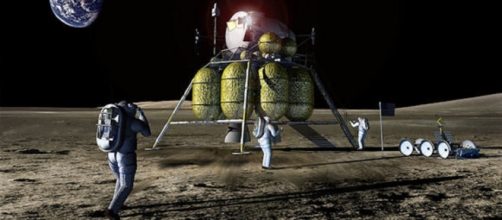Jason Crusan, director of advanced exploration systems at NASA, made a little bit of news at recent hearings before the House Space Subcommittee when he announced that the space agency was developing a call for proposals for commercial landers to transport payloads to the lunar surface. The move comes on the heels of a request for information that was made earlier this year concerning such vehicles. The announcement was made with representatives of three of the companies that might be called upon to provide such services, Moon Express, Astrobotic, and Blue Origin.
The evolution of a commercial lunar transportation systems program
Ever since 2010, when President Obama eschewed a return to the moon, NASA’s lunar efforts had been flying below the radar. The Catalyst program had been started in 2014 to provide in kind services for companies developing lunar landers. Astrobotic, Moon Express, and Masten Space Systems have been participants in the CATALYST program. No money exchanged hands as a result of the Space Act Agreements signed with the three companies.
The Obama decision not to go to the moon always chaffed with the scientific community, the commercial space sector, and Congress, all of which saw the moon as a source of more short term benefits than an underfunded Journey to Mars program.
With the advent of the new administration, advocates of a return to the moon have an ally in the White House. President Trump has recently nominated a staunch supporter for the moon, Rep. Jim Bridenstine, R-Oklahoma, as NASA administrator.
The upshot is that NASA is now moving toward commercial arrangements with private companies to send instruments to the moon on commercial landers. One can expect that the first contracts will be signed as early as 2018, especially as the Google Lunar XPrize comes to a conclusion. Moon Express is in the running to land a probe on the moon and completes the requirements of the prized by the end of March 2018.
What comes next?
We can look forward to a formal declaration of a return to the moon program, perhaps next year, that will involve NASA, commercial companies, and international partners with a goal of building a permanent base on the lunar surface.
The centerpiece of such an effort will be the Orion and Space Launch System, as well as commercial counterparts such as the SpaceX Dragon and Falcon Heavy, to get cargo and astronauts to lunar orbit. Commercially acquired landers will get them the rest of the way to the lunar surface. Sooner than many might think, the first people since 1972 will be walking on the moon.


